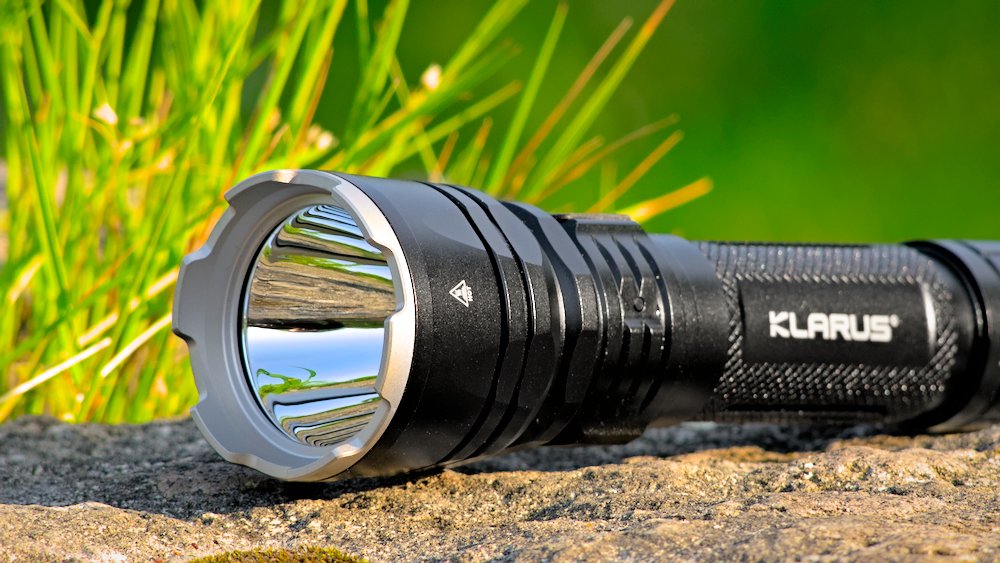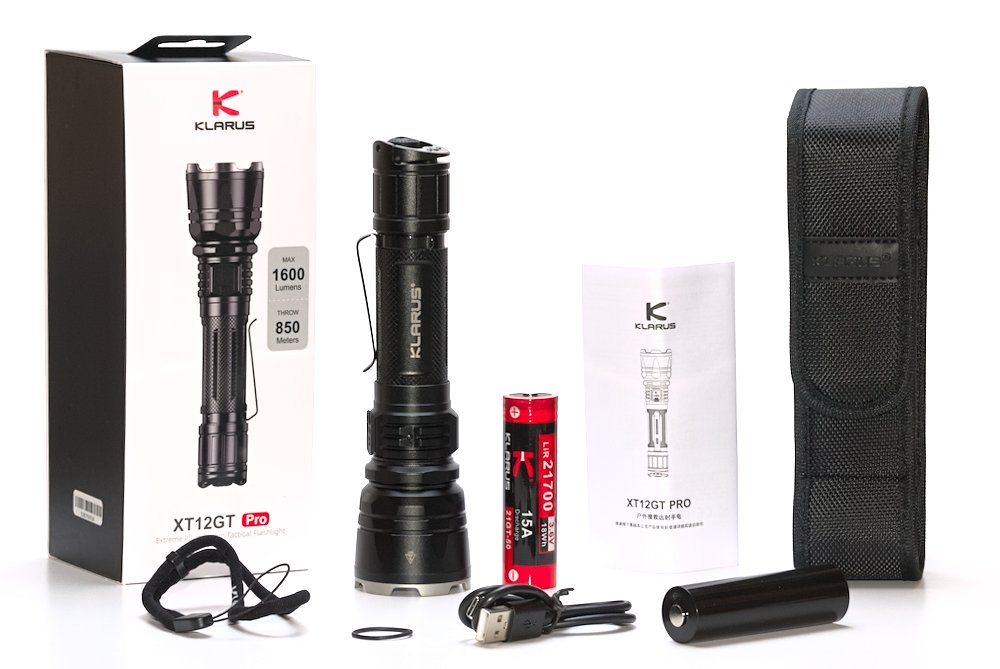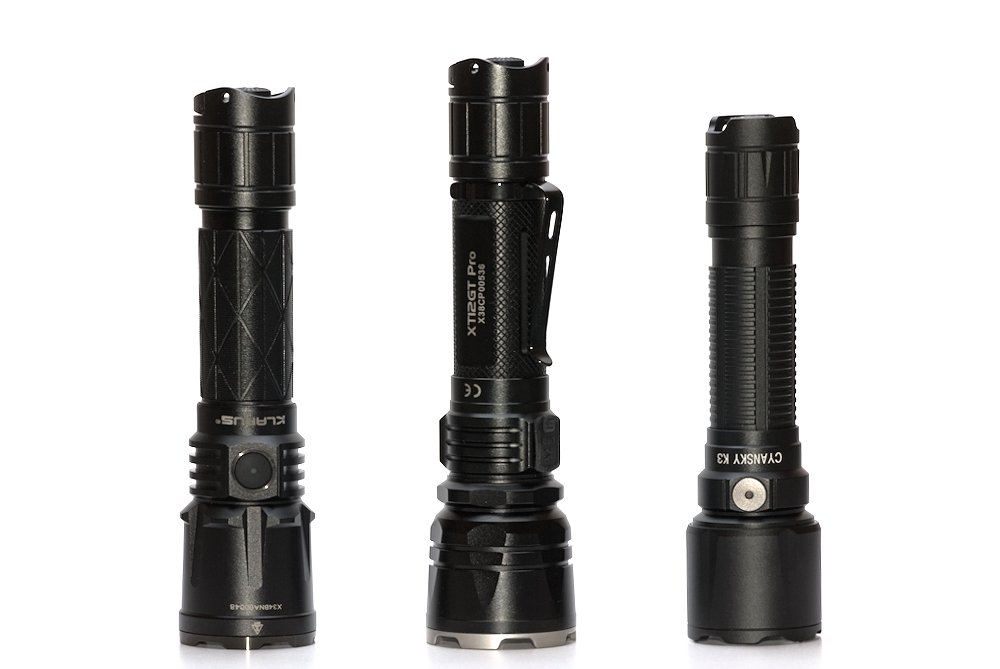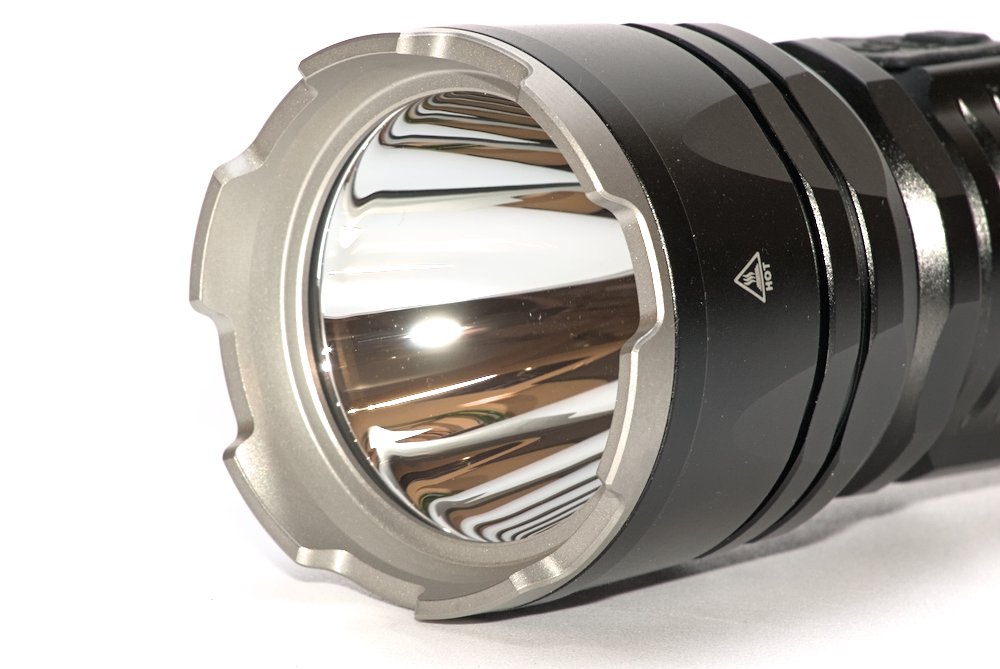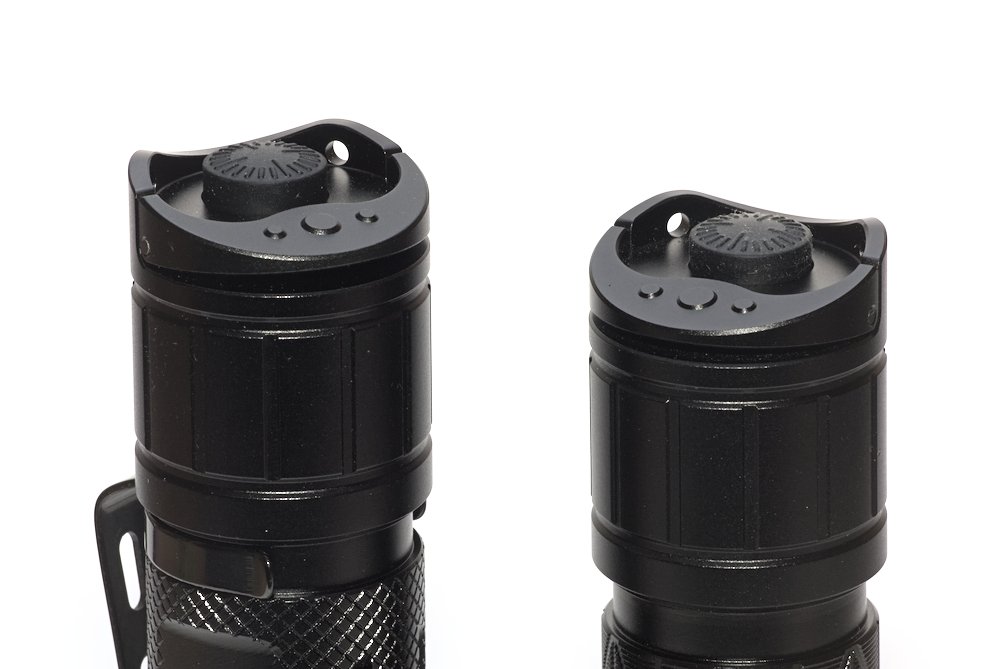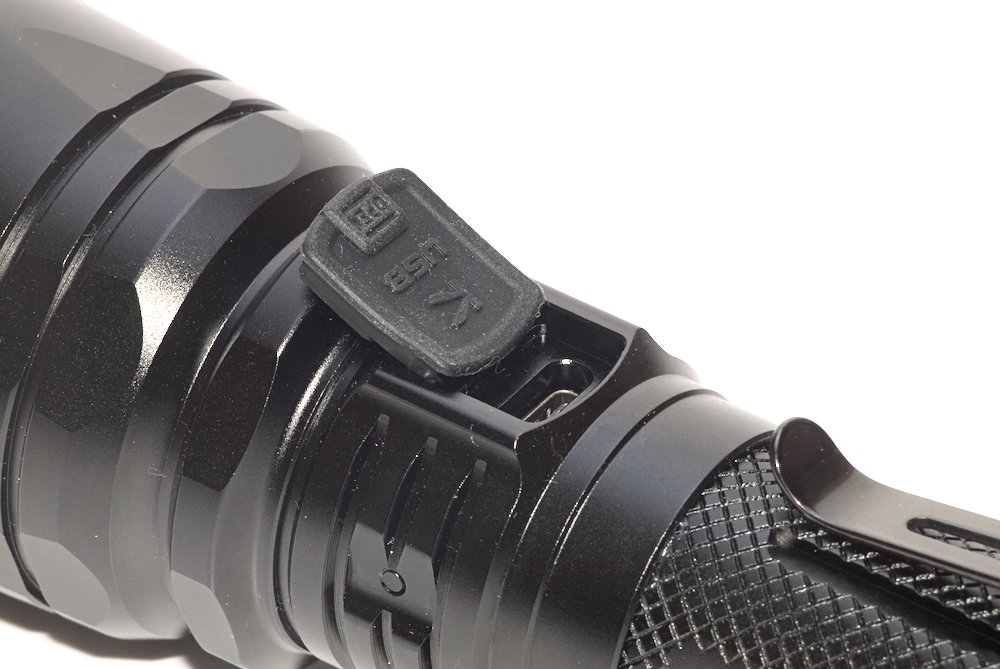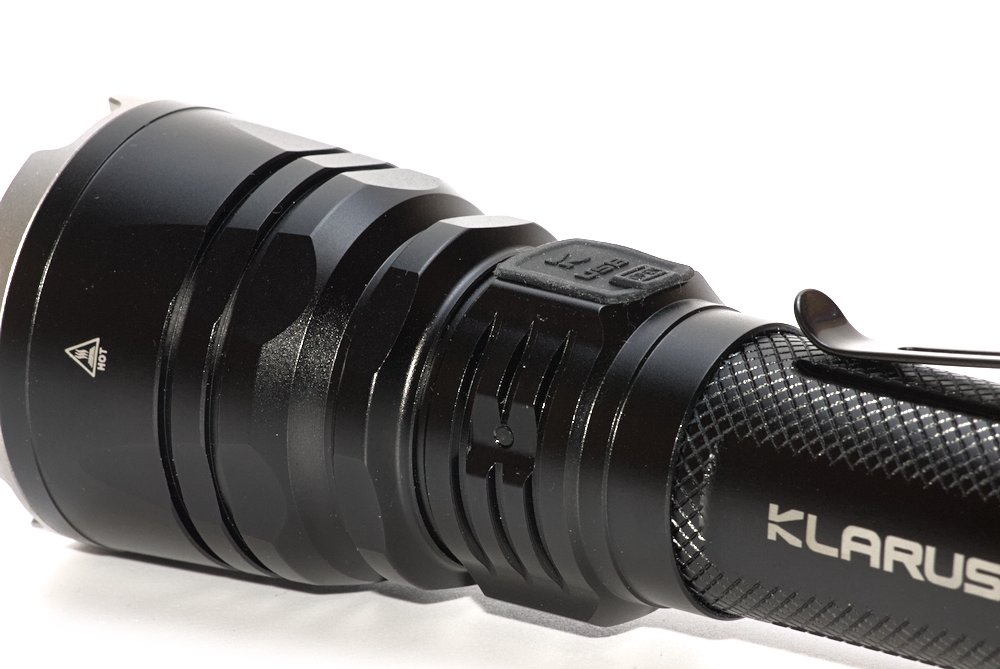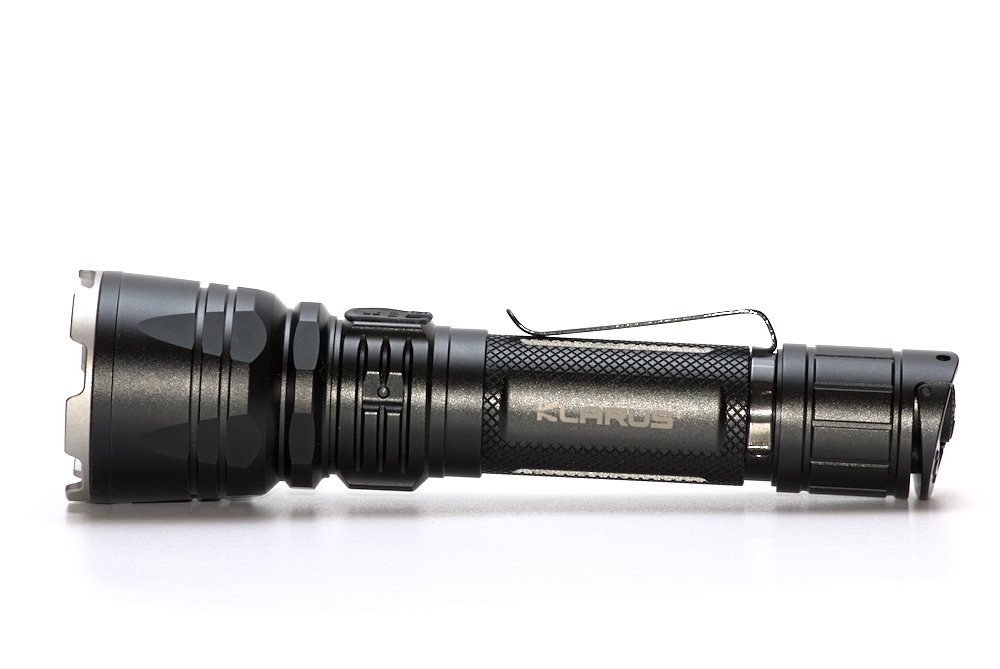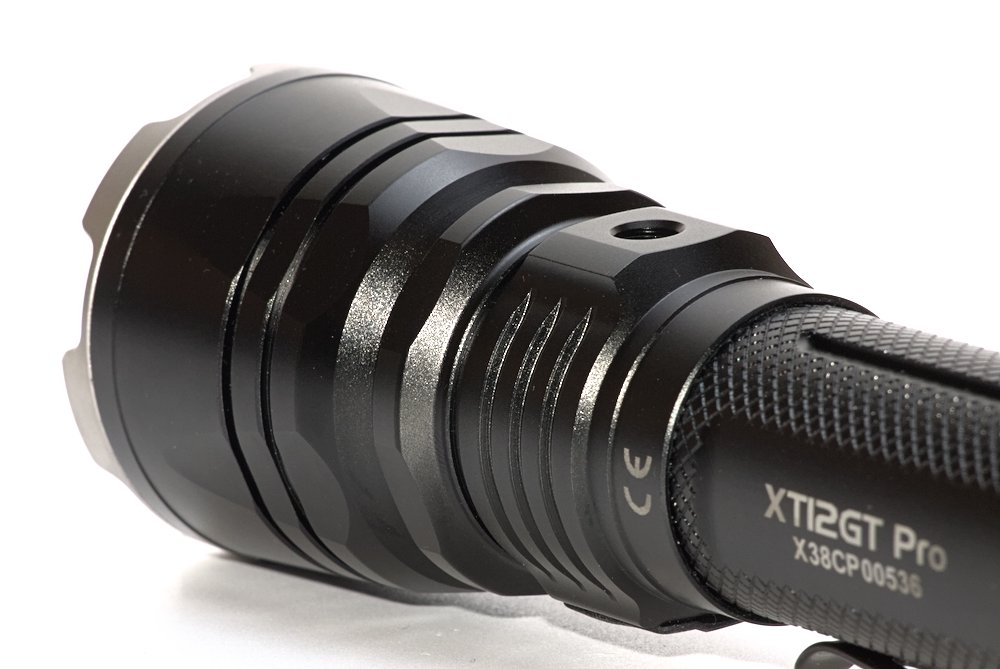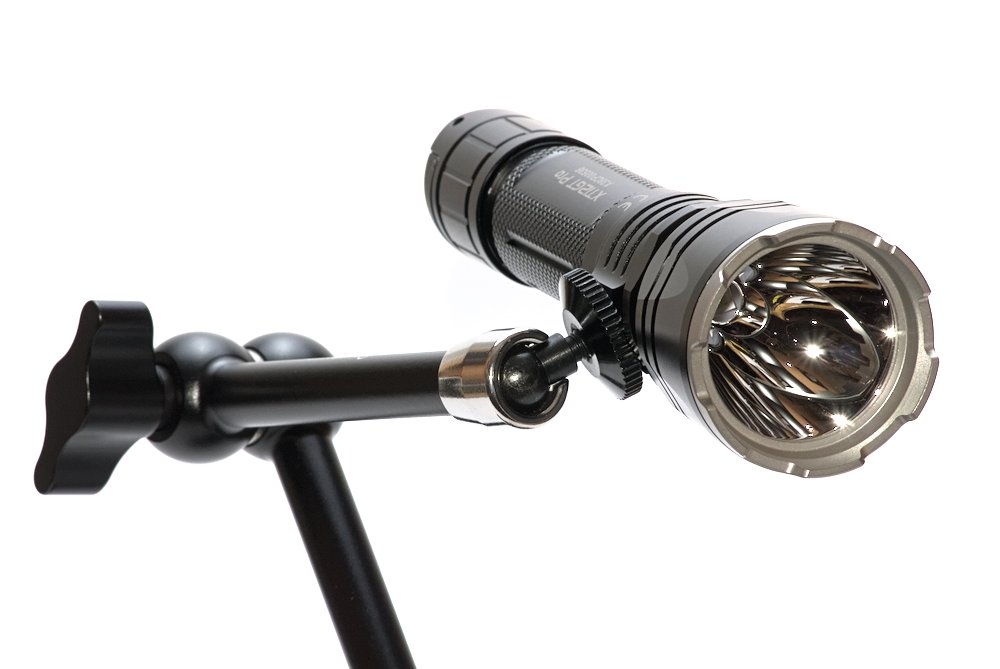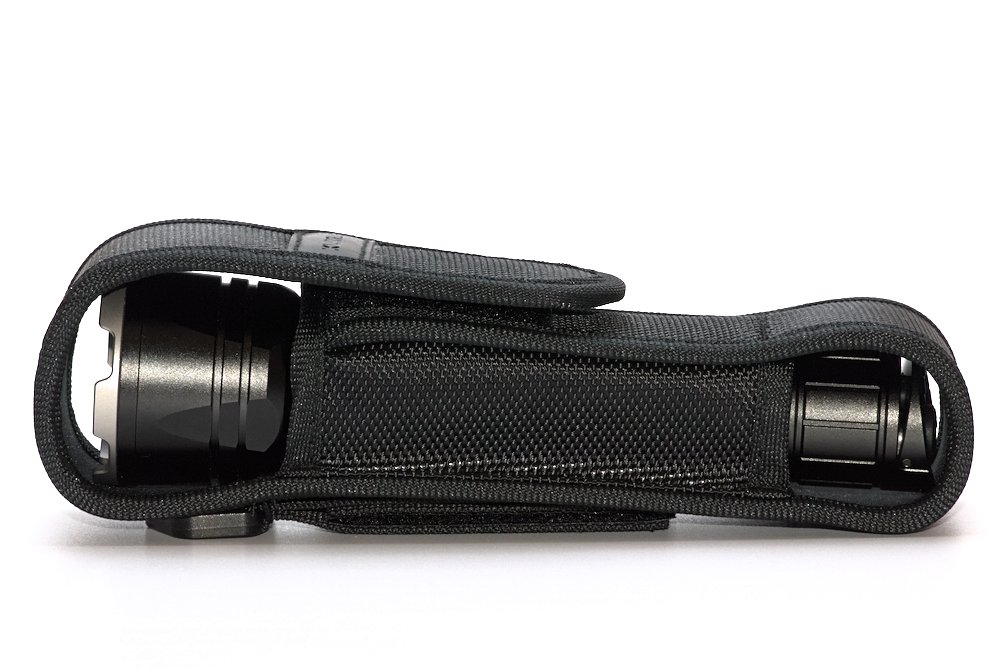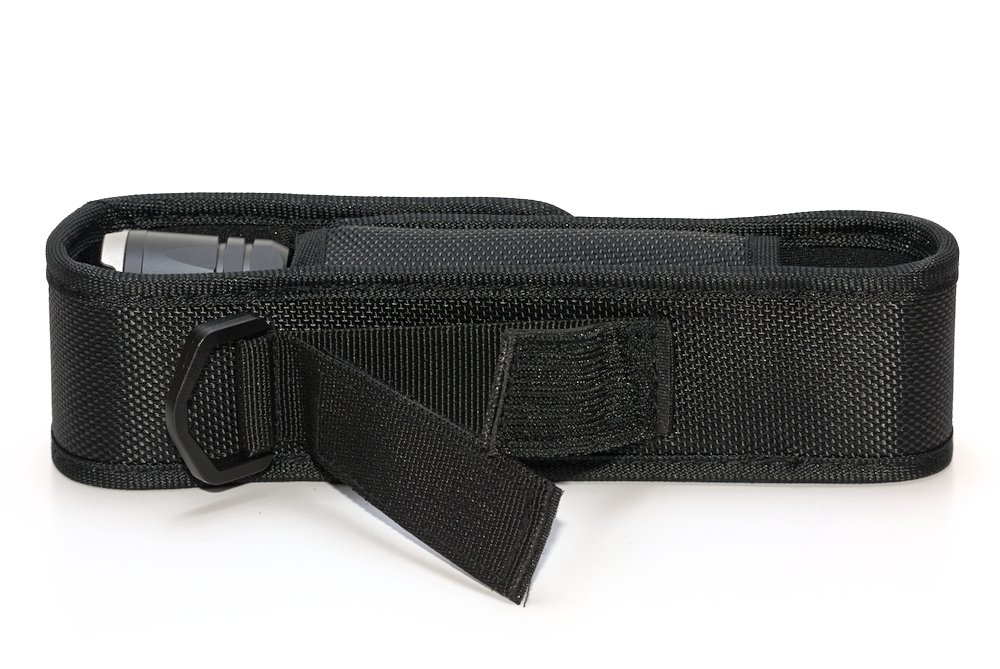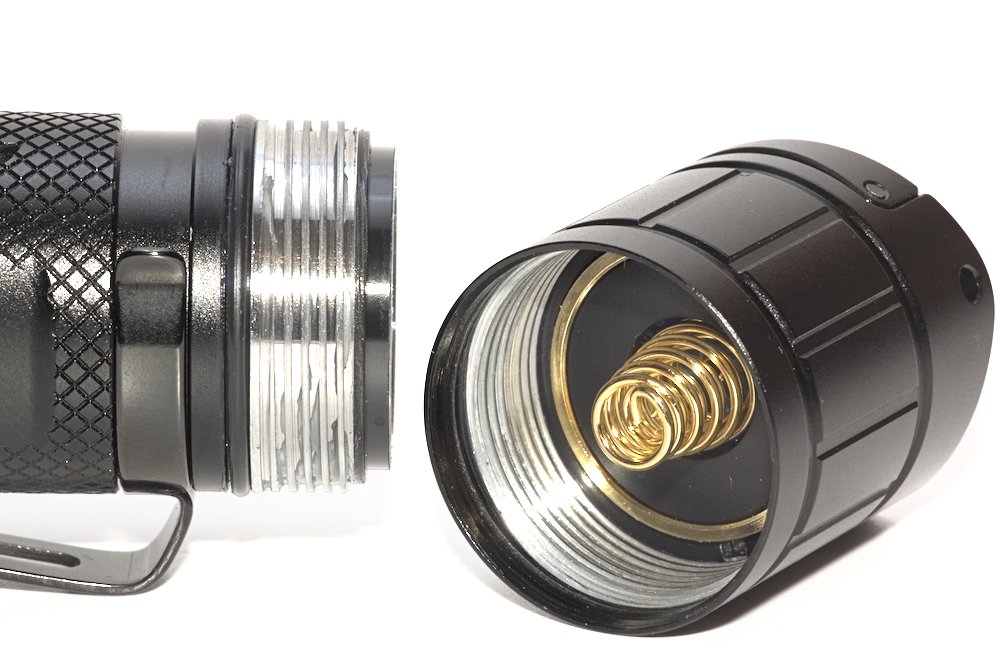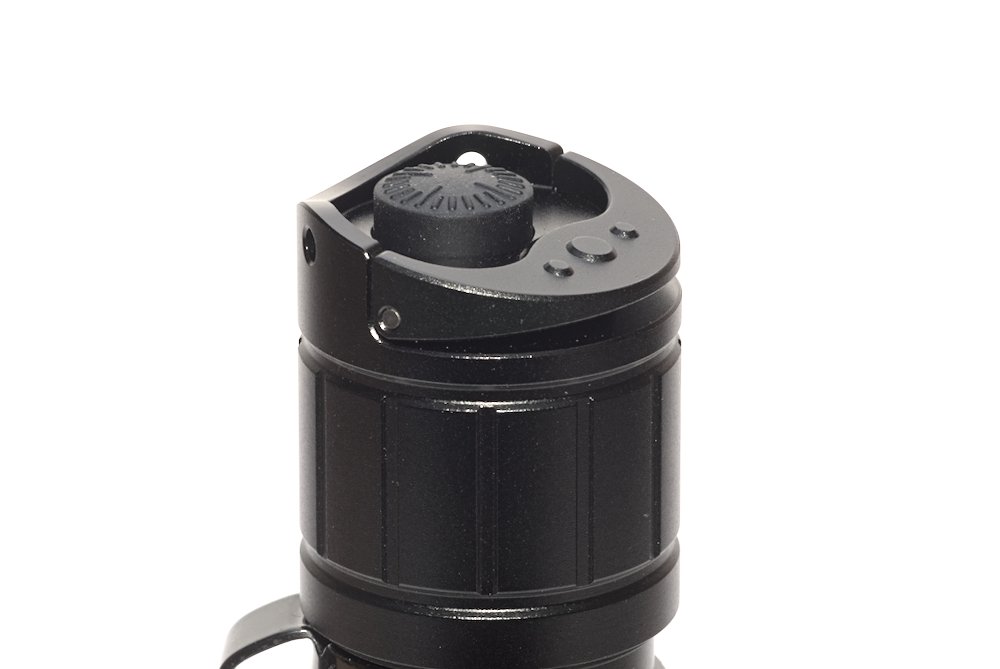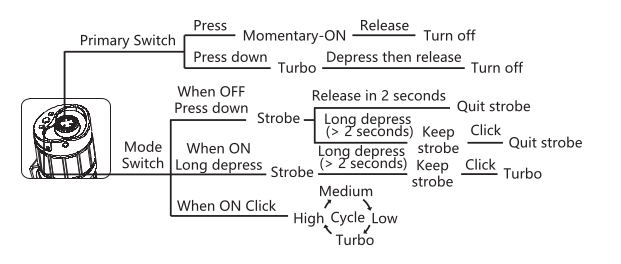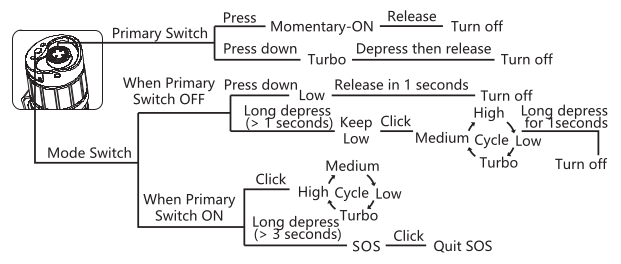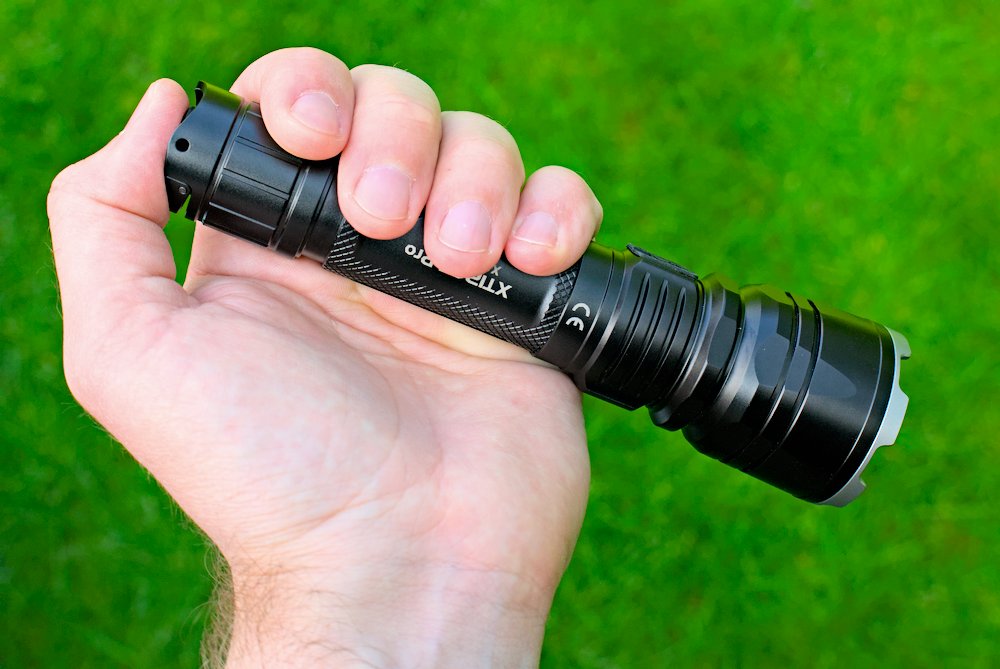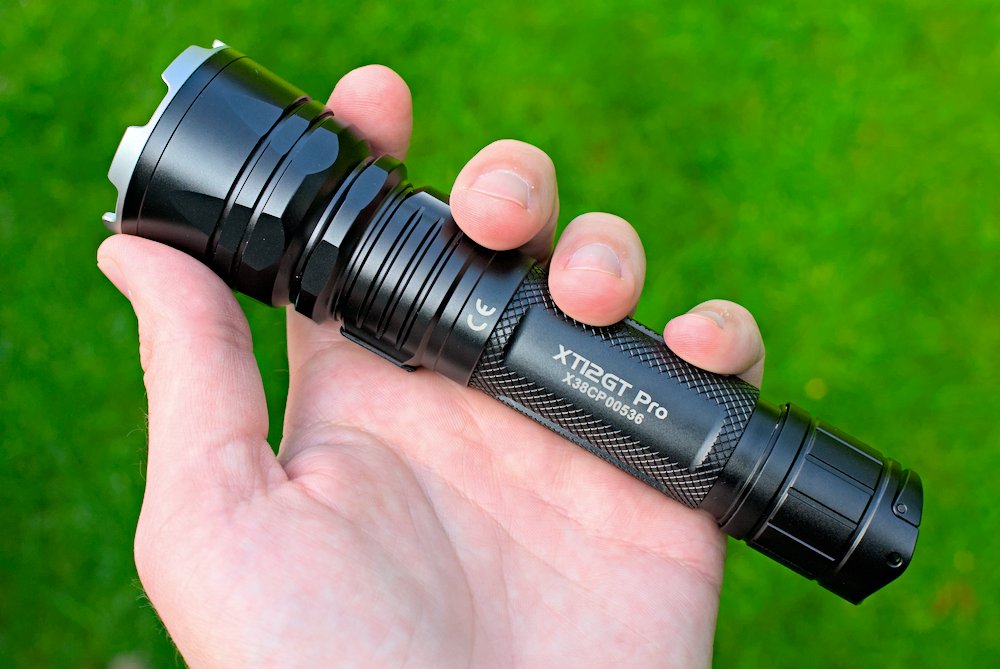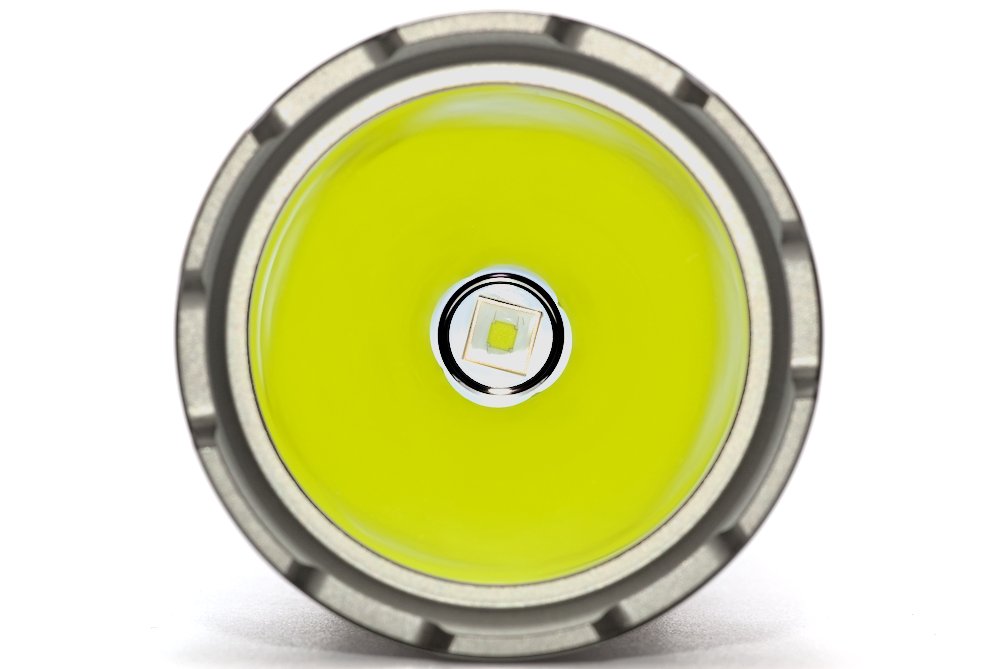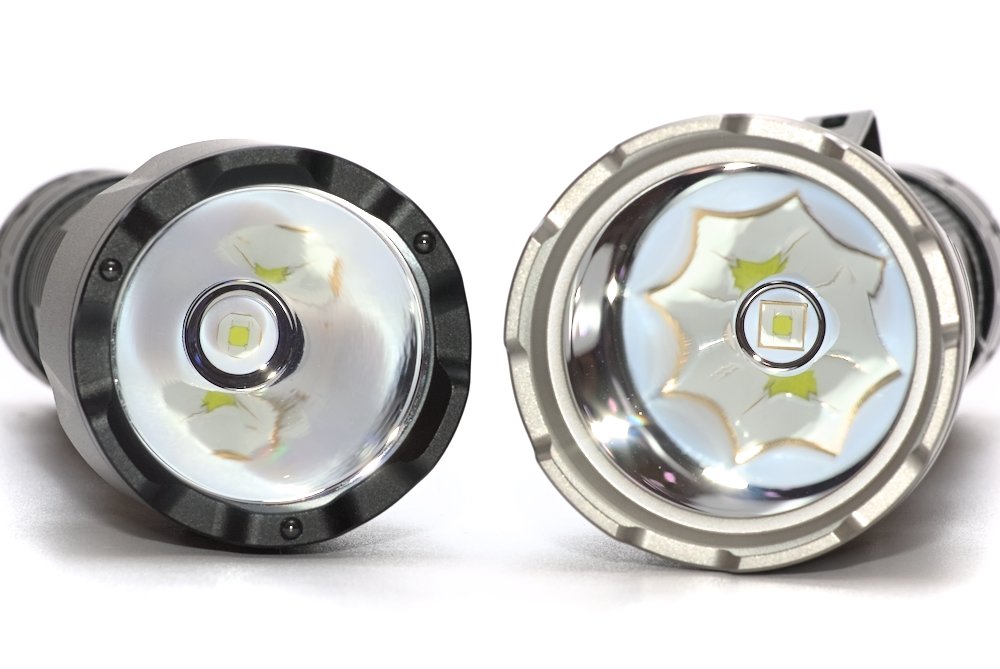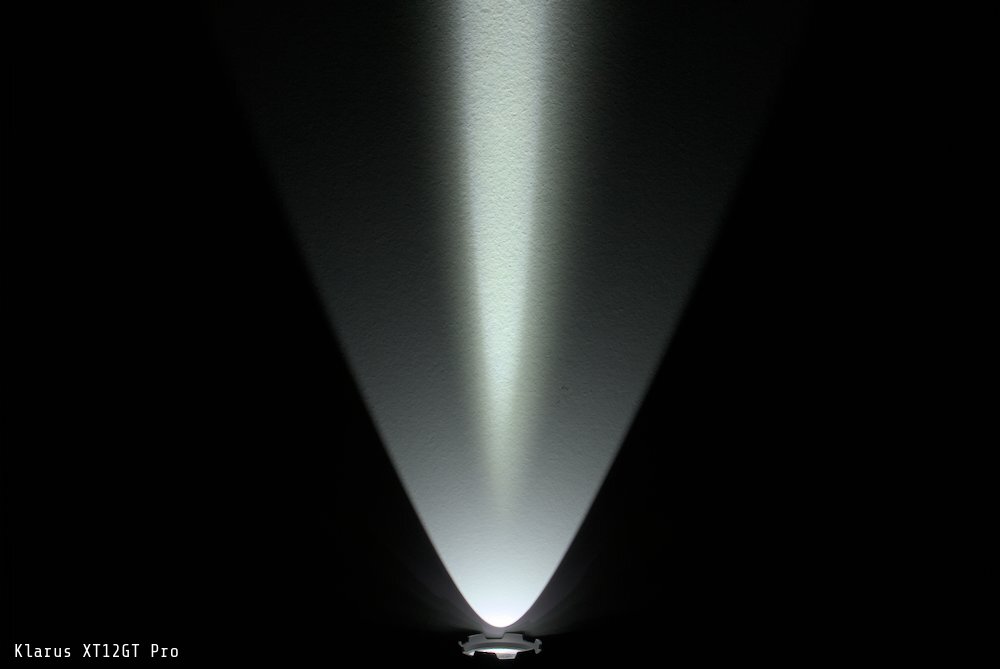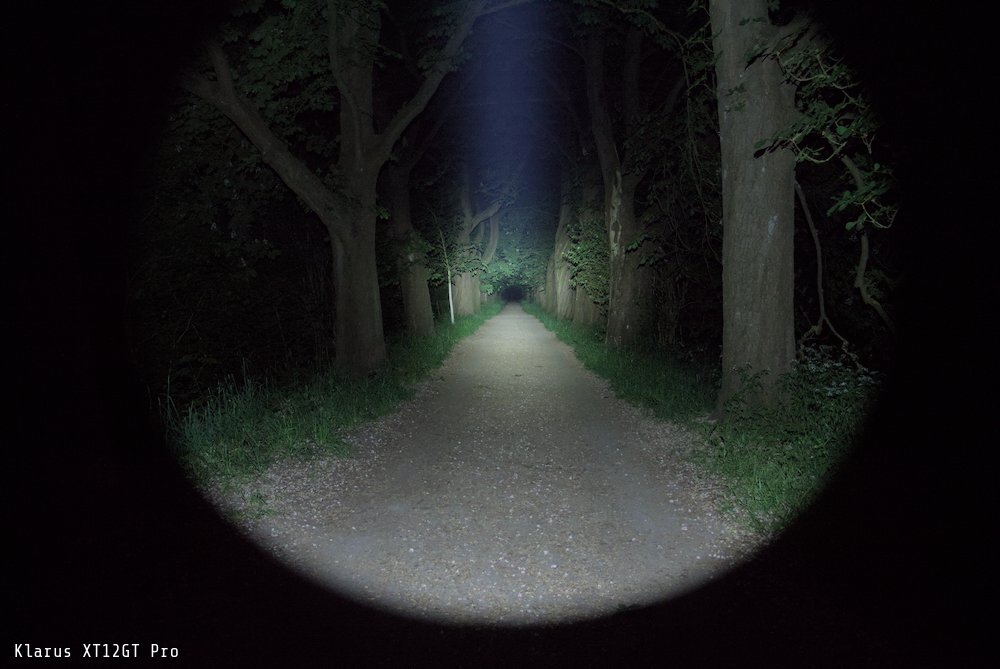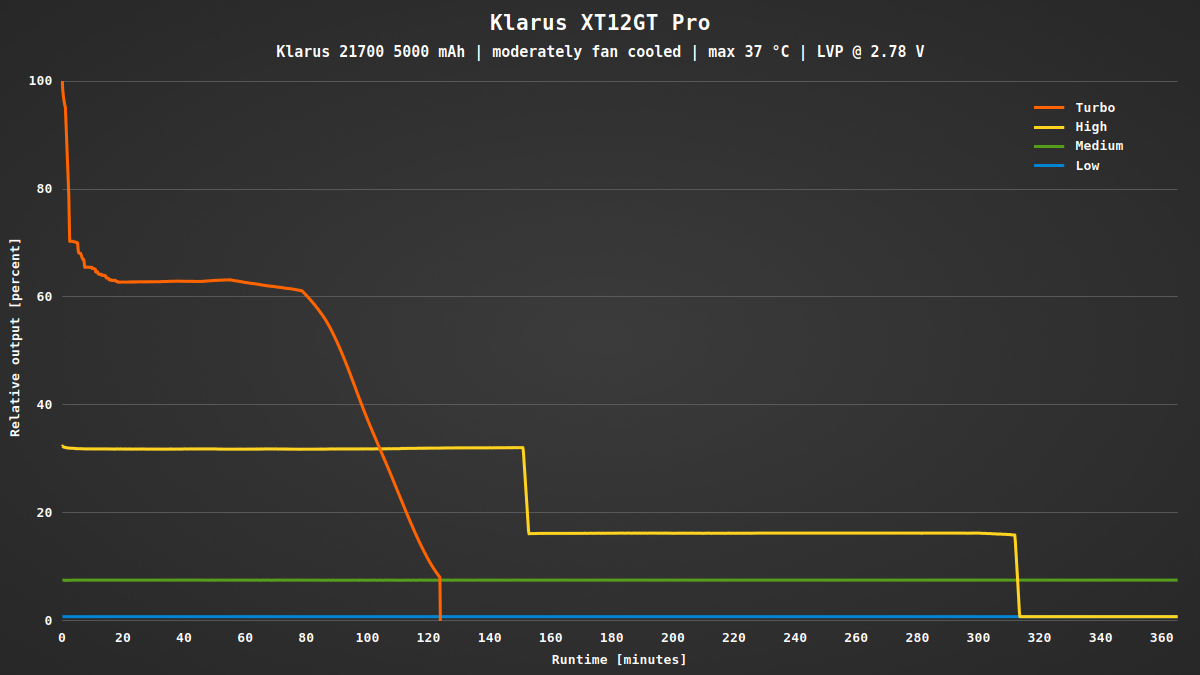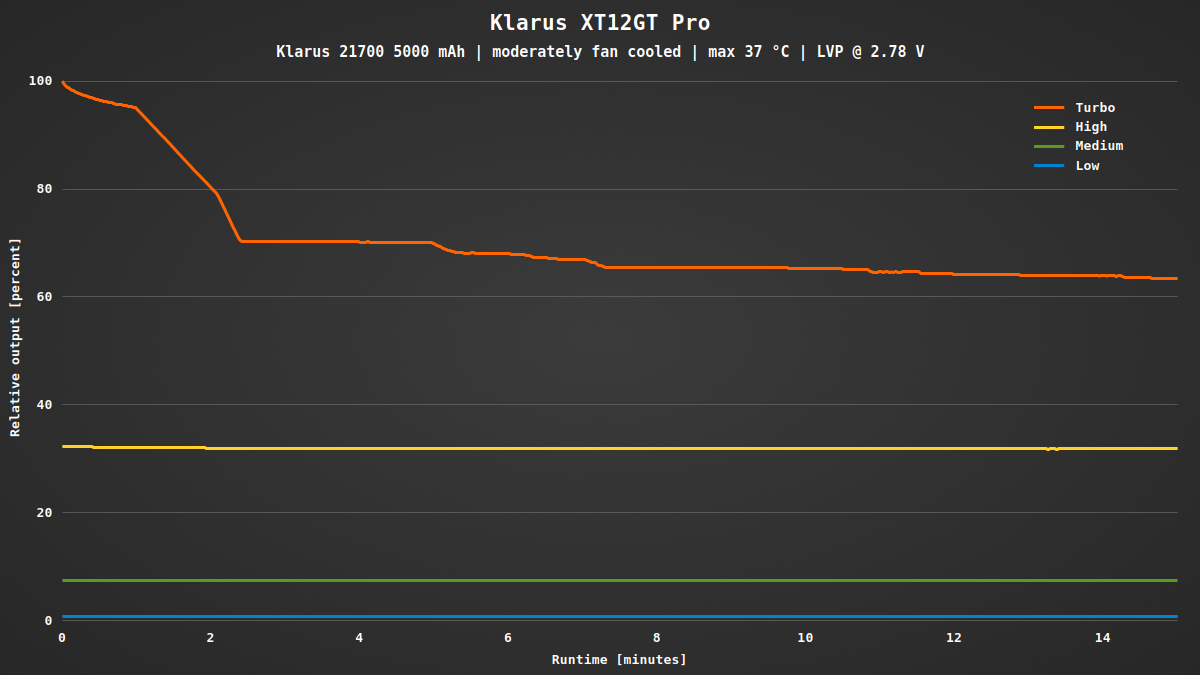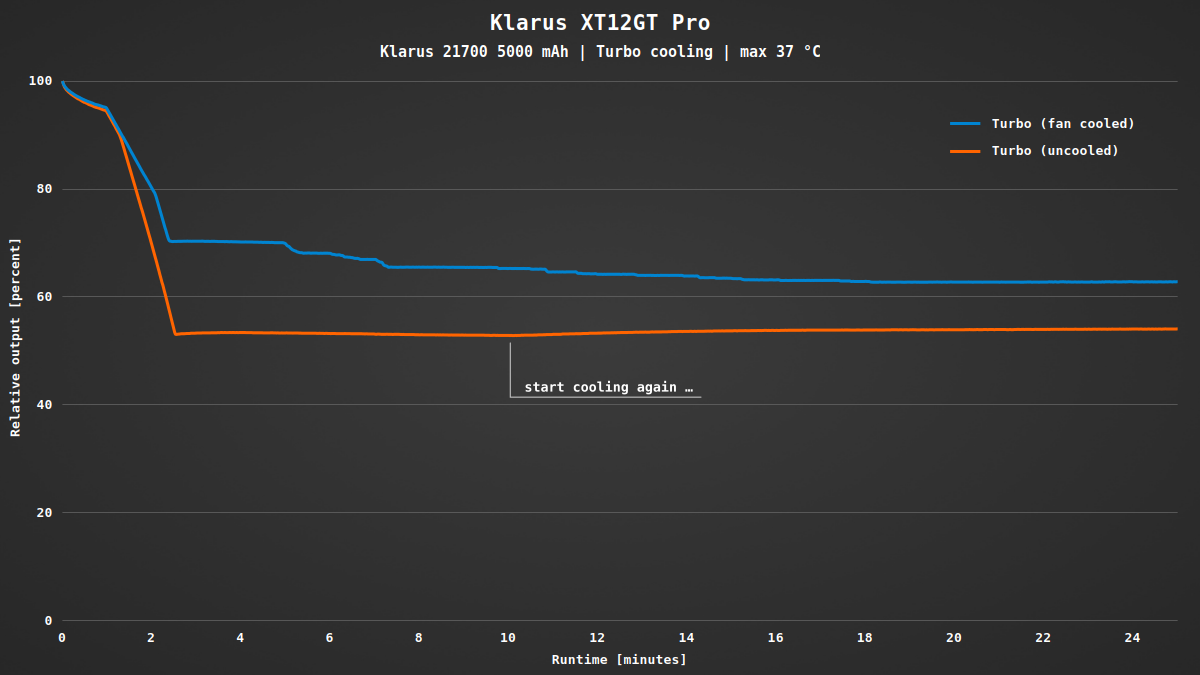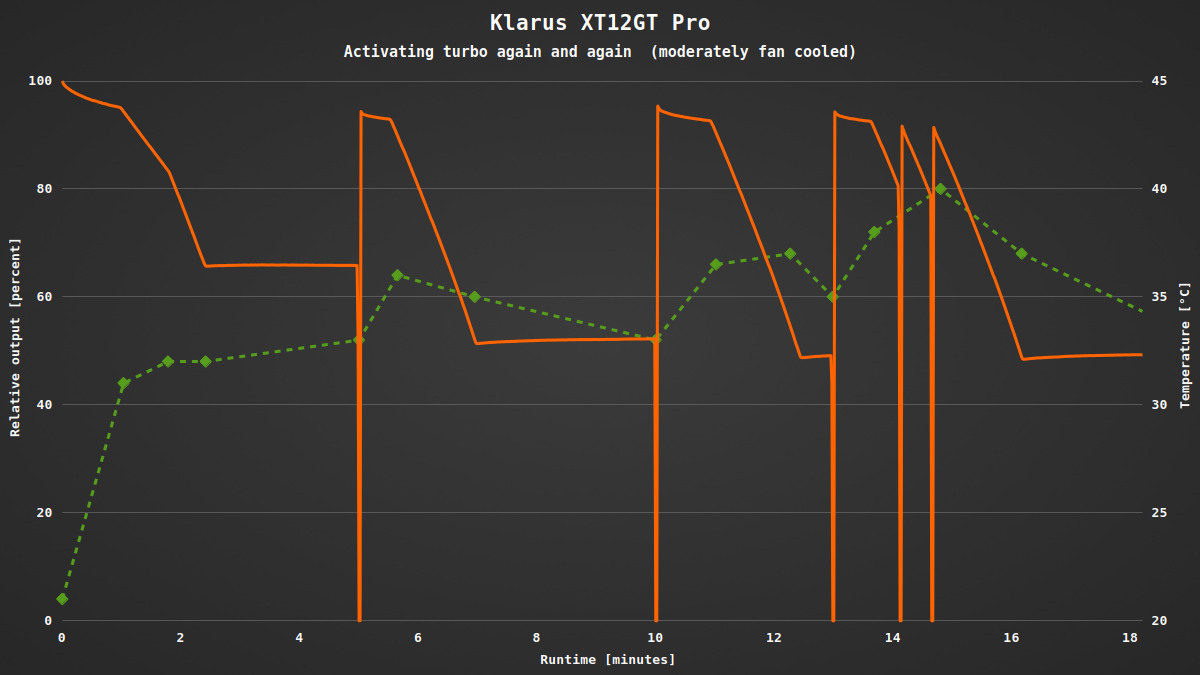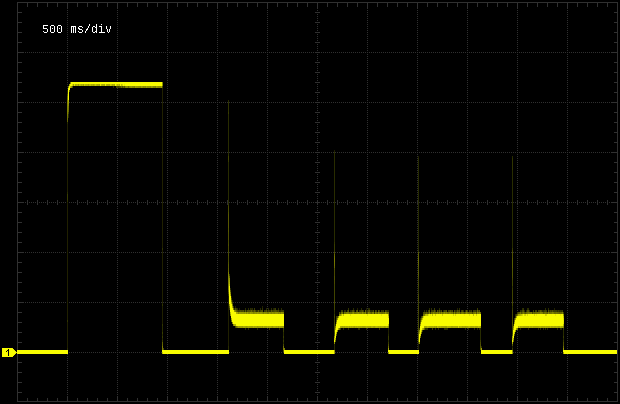A while a go I reviewed the Klarus XT21X Pro, a powerful, tactical flooder. If you swap some letters, you’ll end up with XT12GT Pro, a new tactical thrower from Klarus and as such a good companion for the XT21X Pro.
This flashlight was provided by Klarus for this review, without any obligations. Thank you very much!
This review is also available in German on my website: SammysHP Blog › Klarus XT12GT Pro
Supplied parts and hardware
- 21700 Li-ion battery with 5000 mAh (protected, button-top, 3.6 V at arrival)
- clip (already attached)
- lanyard
- USB-C charging cable
- 1x replacement o-ring
- 18650 adapter
- holster
- manual (EN, DE, IT, FR, ES, CN)
The manual is short, but includes all necessary information to use the flashlight.
In this review I’ll compare the XT12GT Pro with these two flashlights once in a while:
- Klarus XT21X Pro, similar appearance, but a real flooder. More of a complement for the XT12GT Pro.
- Cyansky K3 v2, same LED as in the XT12GT Pro, but a little bit smaller.
With a size of 171 × 45 mm and a mass of 173 g (plus 72 g for the battery) the XT12GT Pro is the largest and heaviest flashlight of the three, mostly due to its larger reflector.
The silver bezel might be stainless steel, but I’m not sure. It has some kind of crenalation so that you can see when it’s on while standing on its head.
All edges are chamfered, the knurling is very soft. Feels much better in your hands than the XT21X Pro.
The tailcap with the dual tail switch is identical to the one of the XT21X Pro. There are a forward clicky switch and a large momentary button. It also has two holes to attach a lanyard. Tailstand is not possible.
A USB-C port is located at the head for charging the battery with up to 2 A (input). A full charge takes up to 3:45 h. At the end of charging a status LED right next to the USB port will switch from red to green. During charging the flashlight can only be used in the lowest two levels.
A large silicone cover protects the charging port from water and dirt. It is slightly exposed, but appears to hold well and it is easy to close.
On a flat surface the flashlight will immediately start to roll away. Only the clip can stop it. It is simple, but works OK.
Unexpected, but very nice: There is a standard 1/4"-20 hole (camera mount) located opposite of the charging port.
It allows you to attach the XT12GT Pro to all kinds of accessories, like a magnet, hook, tripod etc.
For carry and storage you can use the supplied holster. Unfortunately it doesn’t have the cup to protect the switch anymore, but otherwise is identical to the XT21X Pro holster.
It has a fixed and a velcro loop as well as a little D-ring.
The tailcap comes with sturdy square threads. Both sides have strong, double springs. The flashlight supports protected button-top batteries as well as unprotected flat-top. It also works with two CR123A or 18350. The inner tube is responsible for the switch signal to the driver.
The IPX8 rating allows submersion in water up to two meters. It should also survive drops of up to one meter, as stated in the manual.
Machining is very good, no sharp edges, perfect anodization.
User interface and features
A dual tail switch is used to control the flashlight. The round forward clicky with the silicone cover is the primary switch and allows momentary and on/off. The large paddle, made of metal, is the mode switch.
There’s no additional side switch like on the XT21X Pro, but I haven’t missed it.
There are two separate UIs: The tactical mode is the default and uses the primary switch for momentary or constant turbo, while the mode switch activates strobe (either momentary or constant when held for two seconds or more). Strobe alternates between 14.3 and 7.6 Hz.
To switch to the other UI, keep the mode switch pressed for at least five seconds until the status LED flashes green and red. The press the primary switch and release the mode switch.
In the outdoor mode the primary switch controls turbo as well. But the mode switch is a shortcut to the lowest level instead of strobe.
As you may have noticed there is no mode memory. You can turn it on either in the highest or the lowest level and then decrease or increase the brightness. This is different from the Cyansky K3 v2 which always turns on in the last used mode, but doesn’t have direct access to turbo.
You can lock the flashlight by slightly twisting the tailcap. It doesn’t disconnect the power, just the switch signal. So you can even lock it while it’s on.
After turning it on, the status LED will show the approximate state of charge for five seconds:
| Color | State of charge |
|---|---|
| Green | 70% – 100% |
| Orange | 30% – 70% |
| Red | 10% – 30% |
| Red blinking | < 10% |
Although the flashlight is rather long, it is still comfortable to hold. The tail switch more or less forces you into a tactical grip. The XT21X Pro with the additional side switch can also be used with a regular grip.
Illumination
Small LED + large reflector = wow, much throw. The XT12GT Pro has a cool white Luminus SFT-40, like the Cyansky K3 v2. It’s one of the better LEDs for throwers due to its small size with rather high power and slightly “rounded” edges.
The largest difference between the two lights is the much larger reflector of the XT12GT Pro. This makes it possible to create a tighter beam and a smaller spill.
As expected the spot of the XT12GT Pro is smaller, but has a pretty large, soft corona. The spill is small and rather dark. In reality the centering of the LED looks better than shown in the photo (probably perspective).
Comparison: Cyansky K3 v2 / Klarus XT21X Pro
Comparison: Cyansky K3 v2 / Klarus XT21X Pro
In practice there’s little, but noticeable difference. Depending on the situation one flashlight might be better than the other. But the actual distance is more or less the same, also because the Cyansky has a higher output.
Detail: Klarus XT12GT Pro / Cyansky K3 v2 / Klarus XT21X Pro
Eventually it’s more a question of taste which light you prefer. Is one too big or too small? How’s the handling? Which switch do you prefer? With more power the XT12GT Pro would be at the first place, though.
Driver and runtime
The Klarus XT21X Pro immediately started to ramp down in turbo. The Cyansky K3 v2 achieves three minutes before it starts to ramp down. What can we expect from the much larger XT12GT Pro?
| Mode | Brightness¹ | Runtime¹ | Intensity¹ (Throw²) | Current³ |
|---|---|---|---|---|
| Turbo | 1600 lm | 2 h 45 min | 160 000 cd (850 m) | 4.76 A |
| High | 500 lm | 5 h | 40 000 cd (400 m) | 1.00 A |
| Medium | 100 lm | 27 h | 9 233 cd (192 m) | 0.22 A |
| Low | 10 lm | 288 h | 1 058 cd (65 m) | 0.03 A |
| Off | 31 µA |
¹ According to manufacturer ² ANSI FL1 ³ Measured
In turbo it keeps the brightness more or less stable for one minute, then it ramps down over another minute. It will then try to maintain less than 37 °C. High level is constant for 2.5 hours and then steps down.
Here you can see the influence of cooling. There’s a big difference in the initial ramp down, but when cooling is activated again, is ramps up only very little.
Of course the temperature limit is ridiculous. Only after activating turbo several times I was able to reach 40 °C. I’d expect a limit of 50-55 °C, which would mean much longer turbo time for the XT12GT Pro.
Klarus is also very cautious with the maximum current of only 4.76 A in turbo. The Cyansky K3 v2 runs at 7.35 A.
When the battery voltage is below 3.2 V, the status LED starts to blink red. At 2.70 V the flashlight turns off to protect the battery.
Brightness is regulated without PWM. While checking it, I noticed a short flash when you turn on the lowest level, but it is only visible when you’ve use turbo shortly before.
You can find more details about the switch in my review of the Klarus XT21X Pro.
Conclusion
If you’re looking for a thrower complement for the XT21X Pro, the Klarus XT12GT Pro might be a good choice. It is very similar in appearance and handling and has a great focused beam. The UI is easy to use and works great in practice.
Unfortunately Klarus was a little reluctant to unleash the full power of the host by limiting the current to less than 5 A and the temperature to 35 °C.
